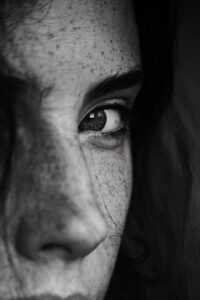If you are insecured (I am, probably, everybody, a tad bit) with self image or how you look or how your silhouette appears, is been programmed. As the pandemic begun, there’s been a havoc of anti-Asian hate crime, with racist generalizations of a “Chinese virus” used against East Asians in particular.
Amidst the discussions, the beauty industry ranks its merits. Lately, it has become clear that racism and cultural appropriation towards South and Southeast, Central Asians is normalized in beauty trends. Unintentional or not, it needs to be stopped.

Dr. Anjali Mahto, a dermat and beauty expert, says the “fox eye” trend makes her uneasy. “I feel really uncomfortable with anything that changes one’s ethnic features,” she says. Though it’s unintentional, the trending of the fox eye is the answer that beauty and racism are intertwined that copying from other races, ethnicities, and cultures is becoming okay. If the base of your “beauty” comes from the stealing off of others, it is unjust. The opposite of this, Far Eastern countries, is having plastic surgery to remove eyelid folds to create a more Westernized look,” Dr. Mahto adds, referring to blepharoplasty, also known as double eyelid surgery. It is common among East Asian people and is said to make one’s features appear more Caucasian, as women strive to achieve Eurocentric standards of beauty. Yes, they’re beautiful people, but so is everyone!
If you scroll through Instagram you will not pass without coming across, before-and-after videos of nose jobs. Non-surgical nose jobs that use filler to alter the shape of the nose and nose-bridge. Of course, plastic surgery is about the individual and their own happiness — but so many of these liquid nose jobs point towards what noses “should” look like (says the girl with apparent imperfect nose, as been programmed to think so).
On TikTok, the hashtag #nonsurgicalnosejob has 16 million views; scroll through and you’ll see many women undergoing procedures to smooth out what they call as “bumps. These bumps mostly are features of ethnic noses, showing genetic ancestry. Contouring is still big today, and can be seen to impart the idea that ethnic noses are not beautiful. It didn’t make me feel particularly bad (my nose), but you see how the inevitable pressure is formed, contemplation, it’s hard (Love yourself anyway)
Aesthetics aside, beauty tools and techniques are questionable too. Massage technique gua sha (I happen to have in jade) has a history in traditional Chinese medicine and is known to relax muscle tension, bring down inflammation, and reduce eye bags. However, similar to other cultural traditions, the Western world has rebranded the technique as “innovative.”
Color is another of beauty’s biggest phenomenon, cosmetics that market with the motto of attaining “fairer” skin are rooted in racially coded language. It implies that anything other than white is undesirable in some way. On social media, there are n number of videos by beauty enthusiasts that show Asian women how to reduce their dark underarms or “strawberry legs” (pigmented hair follicles) using ingredients like acids and retinol. Plenty of comments shows that people have noticed body pigmentation but did not care to do anything about it until now, while others question if body pigmentation is normal? Yes! Viral videos like these perpetuate the notion that it isn’t. Sometimes, subtly, pages advertising questionable skin-brightening creams to Asian people have made an appearance to women’s feeds. Their advertising strategies often show dark skin being lightened, with hashtags such as #YesVeryClean. This suggests that dark skin is dirty, helplessly leaves an impression on a younger audience.